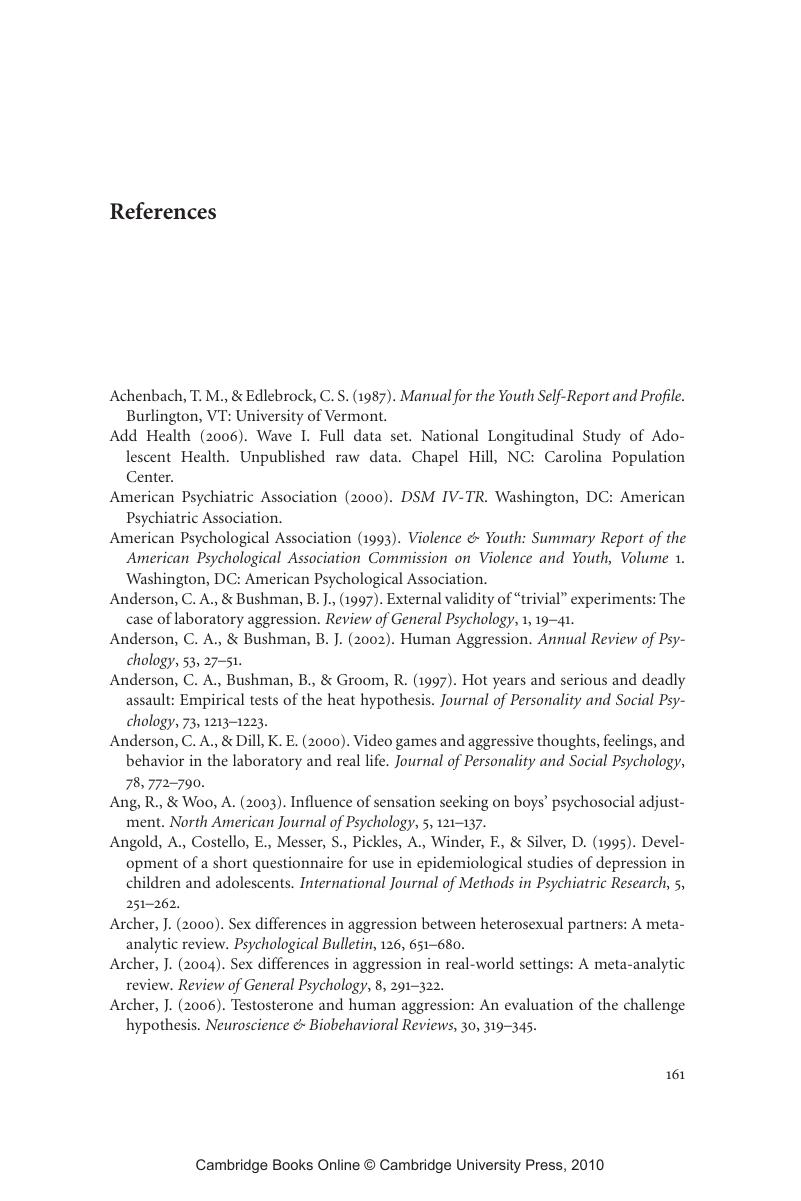Book contents
- Frontmatter
- Contents
- Acknowledgments
- Introduction
- 1 Prevalence of Aggression and Violence in Adolescence
- 2 Developmental Pathways to Violence
- 3 Personality Risk Factors for Aggression and Violence
- 4 Situational Risk Factors for Aggression and Violence
- 5 Aggression and Violence in Romantic Relationships
- 6 Primary, Secondary, and Tertiary Prevention of Aggression and Violence
- 7 Closing Comments
- References
- Index
- References
References
Published online by Cambridge University Press: 23 November 2009
- Frontmatter
- Contents
- Acknowledgments
- Introduction
- 1 Prevalence of Aggression and Violence in Adolescence
- 2 Developmental Pathways to Violence
- 3 Personality Risk Factors for Aggression and Violence
- 4 Situational Risk Factors for Aggression and Violence
- 5 Aggression and Violence in Romantic Relationships
- 6 Primary, Secondary, and Tertiary Prevention of Aggression and Violence
- 7 Closing Comments
- References
- Index
- References
Summary

- Type
- Chapter
- Information
- Aggression and Violence in Adolescence , pp. 161 - 180Publisher: Cambridge University PressPrint publication year: 2007



